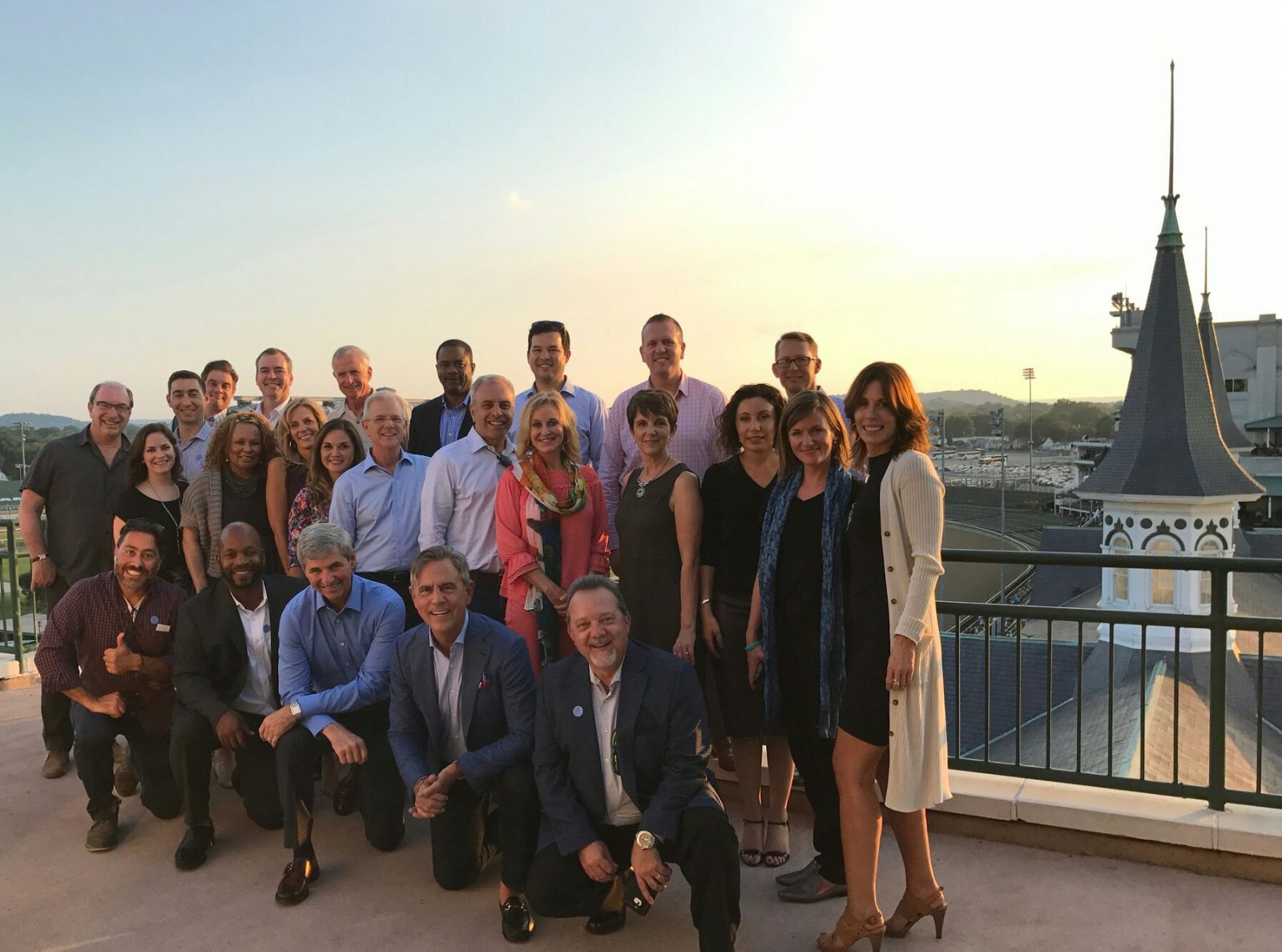 Last week, members of the EDC team joined 20 board members, investors and partners on a trip to Louisville, Kentucky. The purpose was to learn about that city’s emphasis on inclusion and compassion as focal points for their branding and economic development efforts. We met passionate people—both in the private and public sectors—who are working hard to create a community that is uniquely Louisville.
Last week, members of the EDC team joined 20 board members, investors and partners on a trip to Louisville, Kentucky. The purpose was to learn about that city’s emphasis on inclusion and compassion as focal points for their branding and economic development efforts. We met passionate people—both in the private and public sectors—who are working hard to create a community that is uniquely Louisville.
Louisville Mayor Greg Fischer set the tone when he welcomed our group Wednesday evening and stayed to talk with us about Louisville’s past, its present challenges and the city’s goals around lifelong learning, health and compassion. Louisville’s challenges are significant, but they do not shy away from talking about them openly. And there is a genuine continuity to how people raise, speak about and confront these issues.
Research and workforce representatives presented hard-hitting data on the region’s existing economic disparities, as well as ambitions to add 55,000 degrees over a ten year span. The city’s economic development team and business leaders explained how the region has to work harder than most to attract and retain talent, and showcase their region as a place that is ripe for investment and growth—despite having 30,000 current job openings and being among the most affordable of large metros.
Many of the challenges that they face today stem from events that happened generations ago. But they embrace their past with the belief that they can’t chart where they are going if they ignore where they have been. Addressing a history of racial segregation, poverty and stagnant population growth are as much a part of their economic development discussion and focus as attraction, retention and expansion. The authenticity that was threaded throughout our visit culminated in an honest dialogue among our delegation.
San Diego’s Story
Back home, San Diego has experienced solid economic growth, led by its innovation industries, which have added jobs three times faster the overall economy1. However, this prosperity has not been shared by all San Diegans. A recent study found that there are more than one million people in our region with incomes too low to afford basic costs of living—the numbers are even more appalling for our black and Latino populations.
In San Diego Latinos represent one-third of the population, and are projected to be the majority by 20302. Yet only 17 percent have completed a bachelor’s degree program or higher3. Meanwhile our region has a deficit of 4,500 STEM graduates4. But talent shortages exist in every metro area—our population is our talent pool.
And while we have large employers in our region that are the vanguard of innovation, 59 percent of our workforce is employed by smaller firms that often pay below average wages5. Layer on the fact that San Diego has the second highest median home price and is the fourth most expensive metro to live in6, and you quickly see the risks to our competitiveness as a region.
We spent the past six months working with key partners to develop our story and better understand our own regional challenges. And in the coming weeks we will reassemble our delegation, as well as business and community leaders, to build an economic development agenda that benefits more people, companies and communities: an agenda that grows our own talent, bolsters small- and medium-sized firm growth, and addresses the cost of living pressures on talent attraction and retention.
There is a lot of work to be done, and it will require great collaboration and coordination. Our mission at EDC is to maximize the region’s economic prosperity and global competitiveness. To live up to that mission our economic development strategies must promote and account for growth and inclusion.
Click here for an EDC-produced research profile on the Louisville and San Diego economies.
Footnotes
- U.S. Bureau of Labor Statistics, 2006-2015.
- American Community Survey, 2016; SANDAG population projections.
- American Community Survey, 2016.
- EMSI, 2017.2.
- Firms with fewer than 100 people; CA EDD Business Statistics, 2015.
- Among 50 most populous metros; National Association of Realtors, 2017; C2ER, 2017; EMSI, 2017.3.